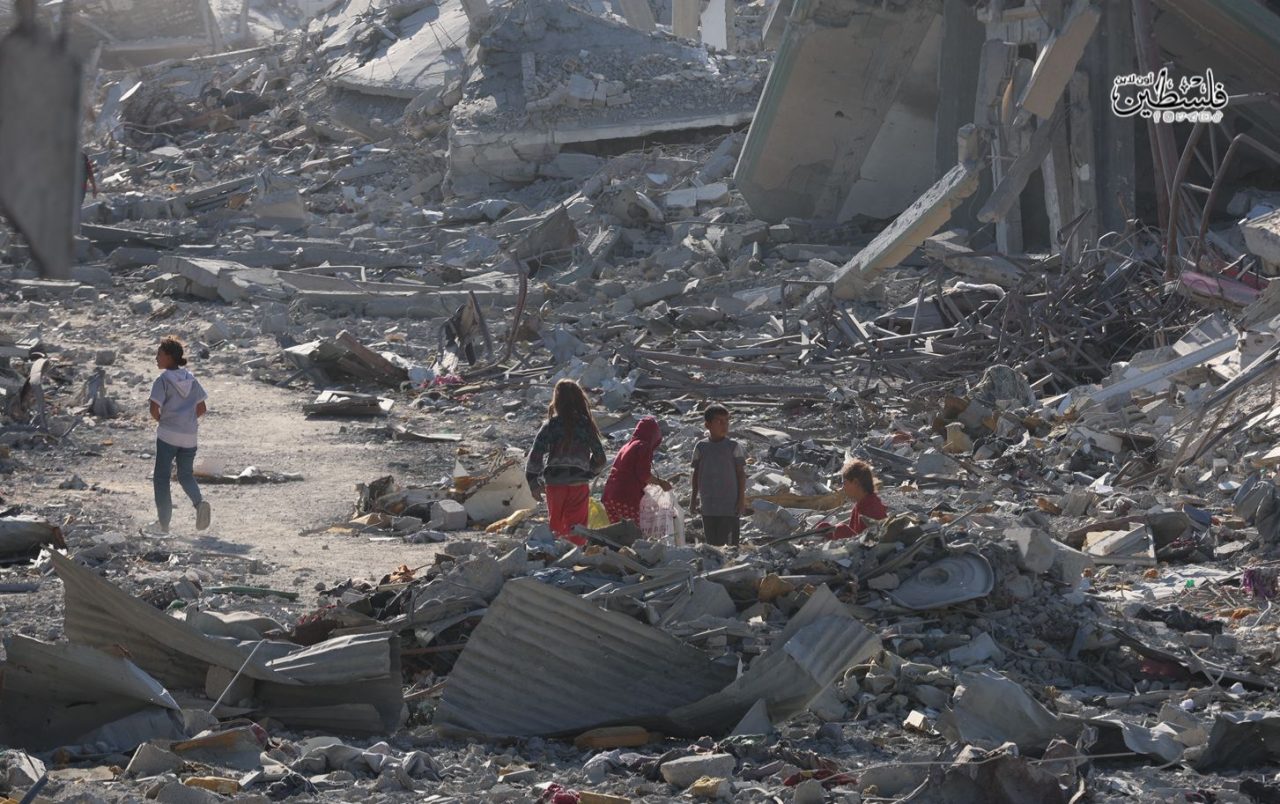GAZA,(The Palestine Foundation Pakistan)Gaza is facing one of the largest construction and humanitarian disasters in modern history, according to a statement from the Government Media Office (GMO). The devastation left by Israel’s military campaign has produced over 70 million tons of rubble and left more than 20,000 unexploded ordnances scattered across the area.
As of mid-October 2025, the GMO estimates place the volume of debris between 65 and 70 million tons, including the remains of thousands of homes, public buildings, and vital infrastructure deliberately destroyed by Israeli forces. This widespread destruction has turned Gaza into a disaster zone, both environmentally and structurally, severely hindering humanitarian aid efforts and obstructing rescue and relief operations.
The GMO warned that debris removal will face major challenges due to the near-total absence of heavy machinery and equipment, a result of Israel’s continued blockade and its refusal to allow entry of essential recovery tools. The full closure of Gaza’s crossings and Israel’s calculated prevention of necessary materials, such as those used for recovering bodies, have only worsened the humanitarian catastrophe.
The statement emphasized that the grim reality on the ground imposes a legal and humanitarian obligation on the international community to act immediately. It urged global powers to pressure Israel to reopen border crossings and permit the urgent and safe removal of debris and collapsed buildings caused by its relentless war.
Initial assessments also indicate that approximately 20,000 unexploded bombs and missiles dropped by Israeli forces remain buried in Gaza, posing a deadly risk to civilians and field workers alike. These explosive remnants require specialized security and engineering teams before any debris removal efforts can safely begin.
Due to the unprecedented scale of destruction, the GMO called for the development of a comprehensive rubble management plan. This should include designated debris accumulation sites, strategies for dealing with hazardous waste, and frameworks for recycling and temporary storage that prioritize restoring life in Gaza safely and efficiently.
The statement concluded by asserting that Israel bears full responsibility for the environmental and structural catastrophe in Gaza and repeated its call for urgent international intervention to safely clear the rubble, neutralize unexploded munitions, and begin reconstruction of the war-torn territory.











